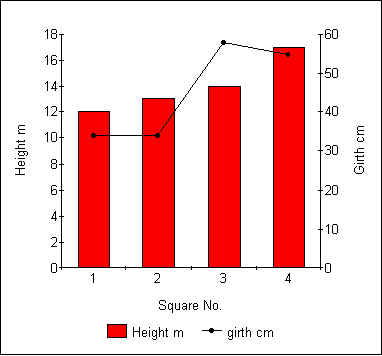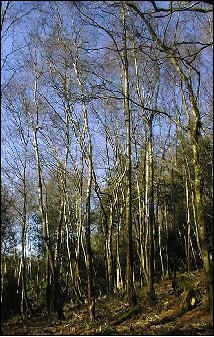 |
The greater number of silver birch trees in square 1 means greater competition for light, forcing the rhododendron to grow upwards to compete. Hence the difference in growth form already noted. The fact that the rhododendron in this area was much shorter than that in square 2 (Fig.3) despite the competition for light, also indicates that conditions in this area are much less favourable for rhododendron growth. The silver birch trees in this area were of small girth and were shorter than in other areas of the site (Fig.5) similarly indicating generally unfavourable conditions for plant growth. |
Figure 5. Silver Birch mean height and girth |
